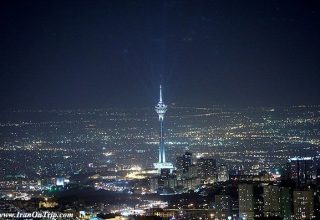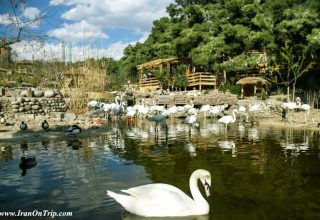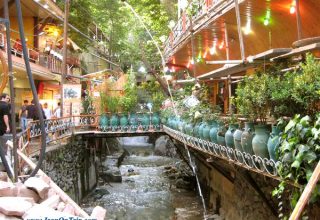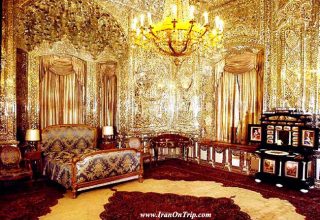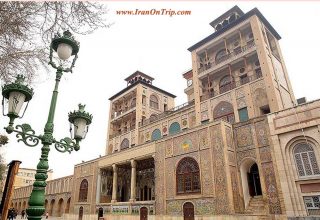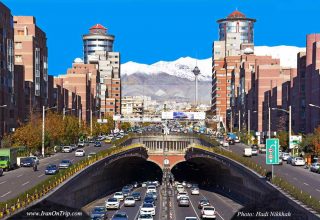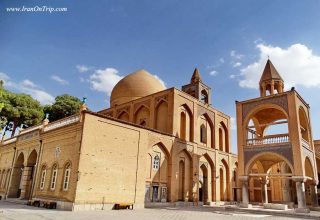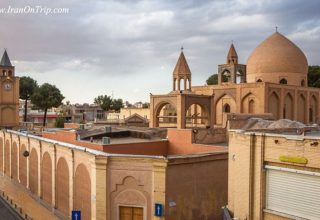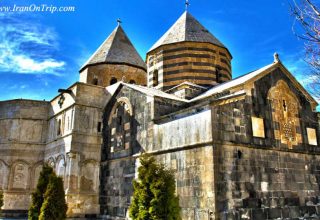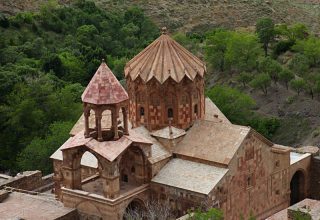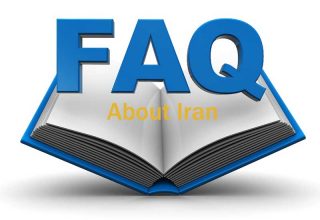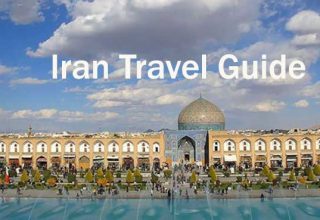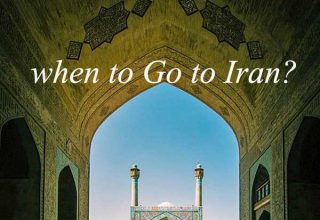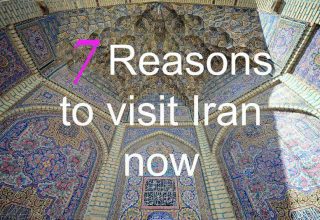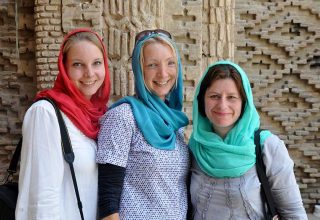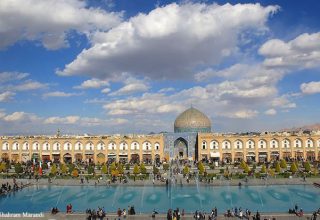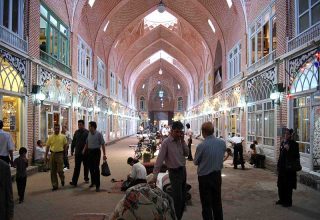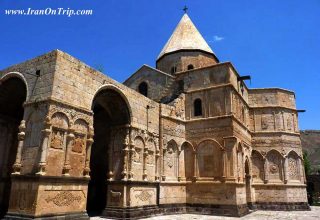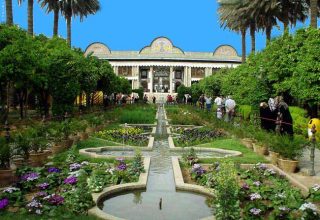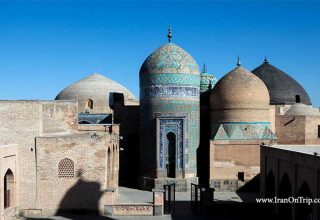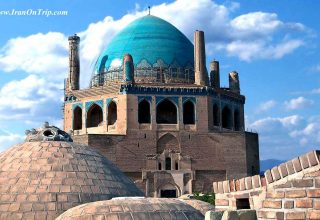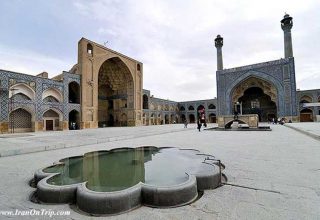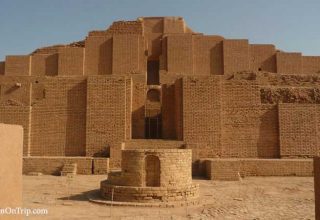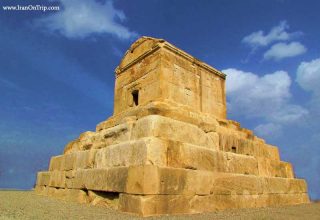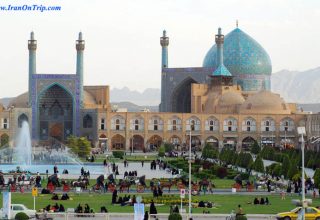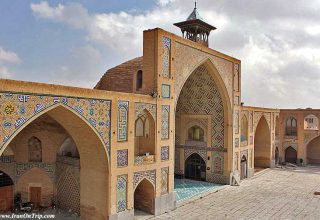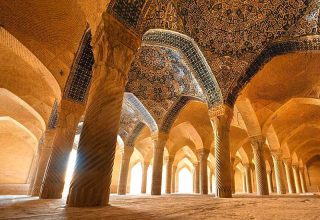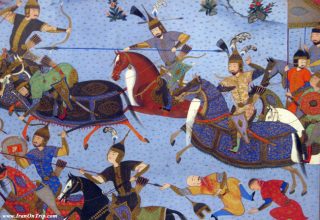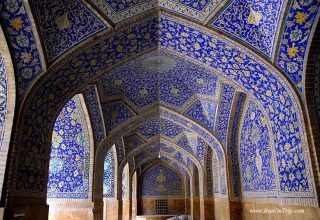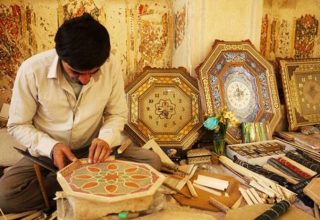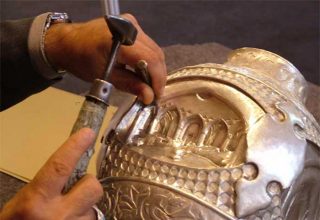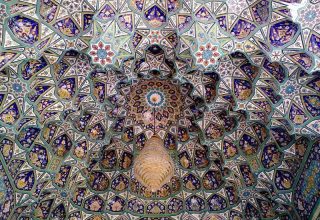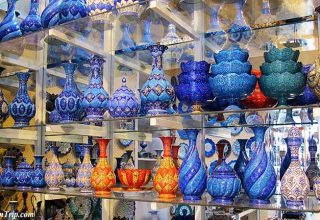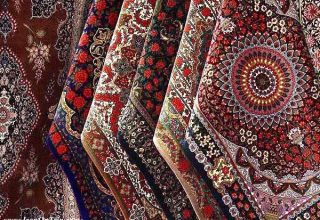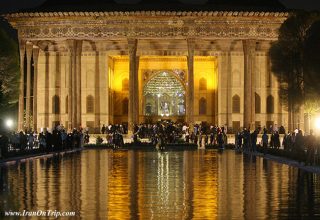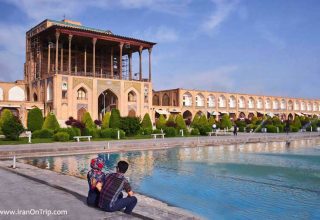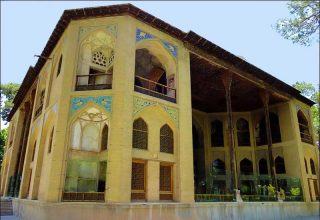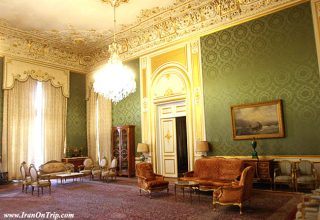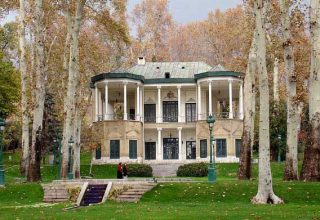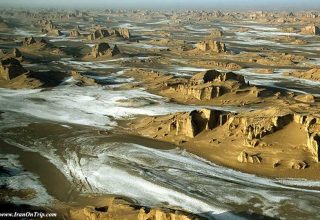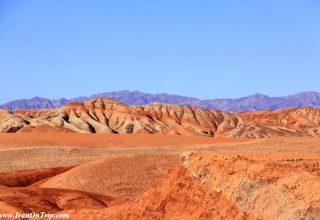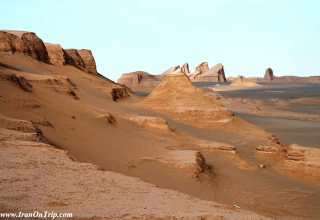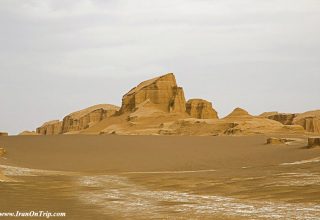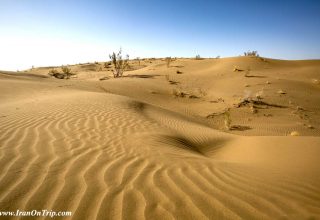
The name of a garden, public square, and complex of buildings in central Tehran, the main part of which presently forms the headquarters of an Islamic revolution militia, the Central Committee of the Islamic Revolution (Komita-ye Markazi-e Enqelab-e Eslami); the southern section houses the Majles library.
The site was originally the property of Moḥammad-Hasan Khan Sardar iravani and was purchased by Haji ʿAli Khan Eʿtemad-al-Saltana. Toward the end of his life (1293/1896), Mirza Ḥosayn Khan Mosir-al-Dawla Sepahsalar purchased the property, intending to construct a mansion, a mosque, and a grand madrasa on it.
The Baharestan building has been the scene of many historical events. Sepahsalar, a reformer and an admirer of European culture and law, is said to have hoped that the building and the madrasa would perhaps one day become a place where the nation’s deputies could meet. A statement attributed to Ẓell-al-Soltan seems to confirm this report: “I visited [Sepahsalar] while he was on his way to Khorasan. As he was at prayer, I spoke with my aunt [Sepahsalar’s wife]. . . . His prayers completed, Mīrza Hosayn turned to my aunt and said, “Your brother has taken my house and school from me, but I hope that the day will come when this same house will be a house of parliament where representatives will meet and that parliament will uproot the Qajar tyranny . These statements seem apocryphal, since Sepahsalar’s death preceded Naser-al-Dīn’s confiscation of his property. Sepahsalar may have been referring to the fact that the Qajar ruler had driven him from his home and exiled him to Khorasan such sentiment would be understandable in a man who visited Europe several times and realized the advantages of its legal systems, and who was also aware of the corruption of the Qajar court. The Baharestan garden and buildings were completed in 1296/1879 (the date 1288/1871 given by Bamdad ) the date is celebrated in a chronogramatic ode by Haji Mirza Ḥasan Eṣfahani Safi ʿAlisah with which the calligrapher Moḥammad-Ebrahim Badayeʿnegar adorned the architrave of the inner building in the east wing of the garden. This architrave was later transferred to the new structure built to house the Majles library in the south wing.
The Baharestan consisted of two structures, an outer quarter (birunī) and an inner one (andaruni) located in the eastern part of the garden. After Naser-al-Dīn Shah confiscated the property, the inner quarter became the residence of Malijak, ʿAziz-al-Soltan and his wife, the shah’s daughter; thus it came to be known as the ʿAziziya (M.-Ḥ. Eʿtemad-al-Salṭana, Ruz-nama-ye Katerat, ed. Ī. Afsar, 2nd ed., Tehran, 1350 S./1971,). During Naser-al-Din Shah’s reign, the outer quarter, which contains a spacious hall and luxurious rooms, was used to receive important foreign visitors and on occasion served as the crown prince’s temporary residence in Tehran .After the edict of constitutional government of 25 Jomada II 1324/17 August 1906, Prime Minister Mosir-al-Dawla ordered that the outer building become the site of the new parliament; but the representatives, especially the clerics, objected on grounds that the Baharestan was not centrally located and that a share of the land was still in dispute. Therefore the first college of electors (clerics, ministers, and courtiers charged with arranging the election of the first deputies) met at the Madrasa-ye Nezam. But three weeks after the elections, when the Madrasa-ye Nezam was found to be too small to hold all the elected deputies, the meetings of the National Assembly were transferred to the building and grounds of the Baharestan. To commemorate the event, a gold plaque inscribed with the words dār al-sura-ye mellī (national assembly house) and ʿadl-e mozaffar (justice triumphant; an ambiguous phrase referring also to Mozaffar-al-Dīn Shah), the numerical value of which is the date 1324/1906, was placed over the entrance to the garden . During the first session of the Majles, the deputies sat on the floor of the great hall arranged in a four-row square. At that time, various opportunistic, special-interest groups would congregate in the guise of anjomans (leagues) in the Baharestan garden and in the Sepahsalar madrasa, from which they would disrupt the Majles with their provocative demonstrations and speeches. With the shah and the Majles at loggerheads, the shah took refuge in the Bag-e Sah, and imperial troops terrorized the people. Threatened by this, the lightly-armed Constitutionalists took cover in the Baharestan and the adjacent buildings. On 23 Jomada I 1326/4 July 1908, imperial troops commanded by Amīr Bahador surrounded the Baharestan garden and shelled the Majles building. Eight hours later, after a number had been killed, some of the deputies fled, others were taken prisoner, and Cossacks, imperial troops, and the rabble of Tehran looted the Baharestan down to its curtains, doors, and windows . A year later (24 Jomada II 1327/13 July 1909), after the leaders of the Constitutional movement had defeated the shah and entered Tehran in triumph, the Baharestan garden was the site of a grand celebration. On the same site three days later, a high commission deposed Moḥammad-ʿAli Shah and arranged the accession of his son Aḥmad Mīrza .
The Baharestan building was eventually repaired and once again became the home of the National Assembly. In later years, the hall and the rooms were furnished, and the ʿAziziya was converted into the library of the National Assembly.
In 1312 S./1933, a statue was purchased for the Assembly from the estate of Sardar Asʿad Jaʿfarqolī Khan Baktiari for the Baharestan garden grounds. Known as the “angel of freedom,” the statue is of a winged figure spearing a vanquished devil of tyranny. The heirs of Sardar Asʿad later returned the money used to purchase the statue and presented it as a gift to the Assembly . The original Baharestan building, with a few cosmetic changes, still exists, but the Majles library was moved to new quarters in the south corner of the garden. The Baharestan garden was expanded northward and eastward, and a new National Assembly building was erected in that section of the garden. With the advent of the 1979 revolution, the name and venue of the National Assembly have changed: the Islamic Assembly (Majles-e Sura-ye Eslami) now meets in what was formerly the Senate building.
Old Square of Tehran – Old Square of Iran – Tehran Province


